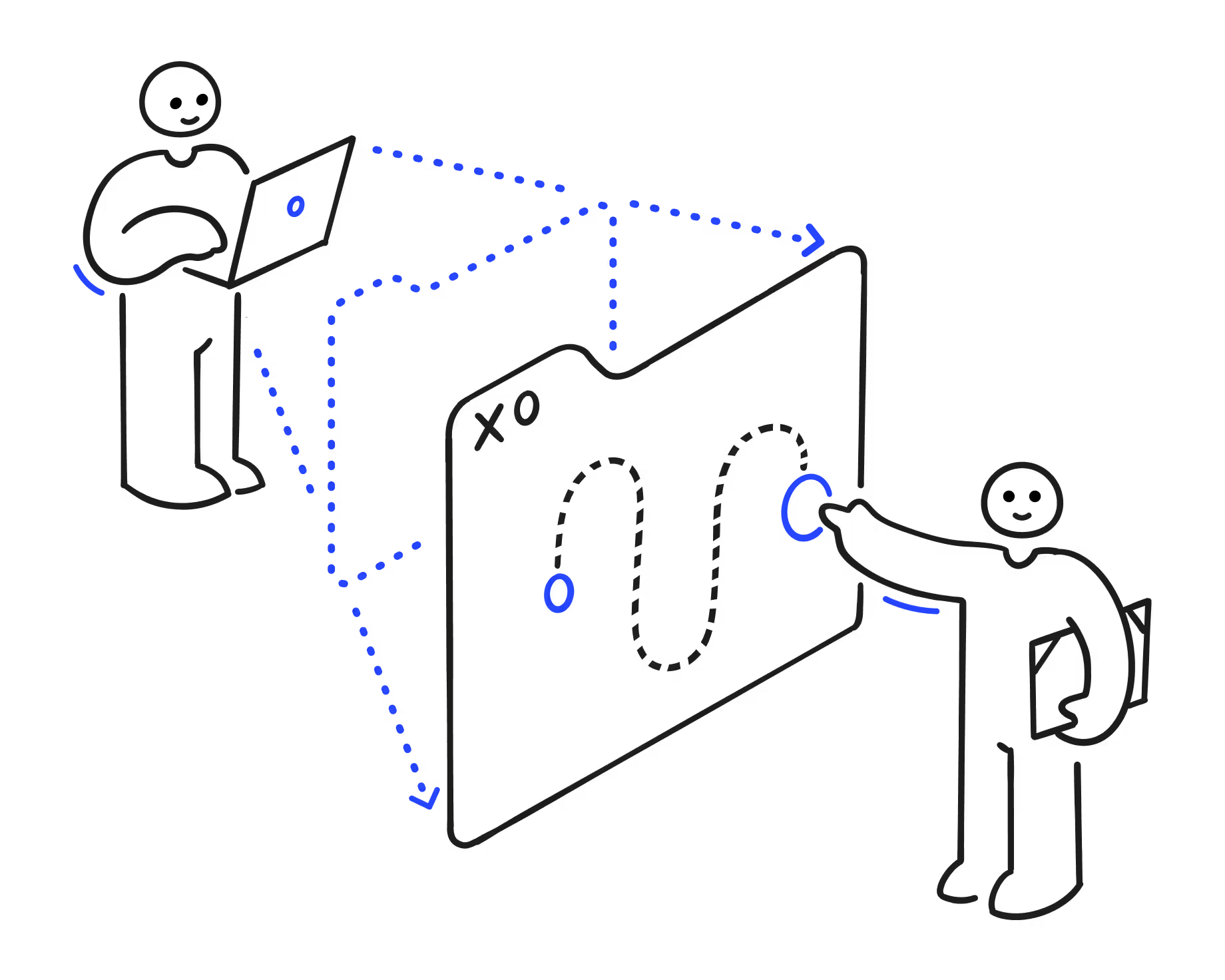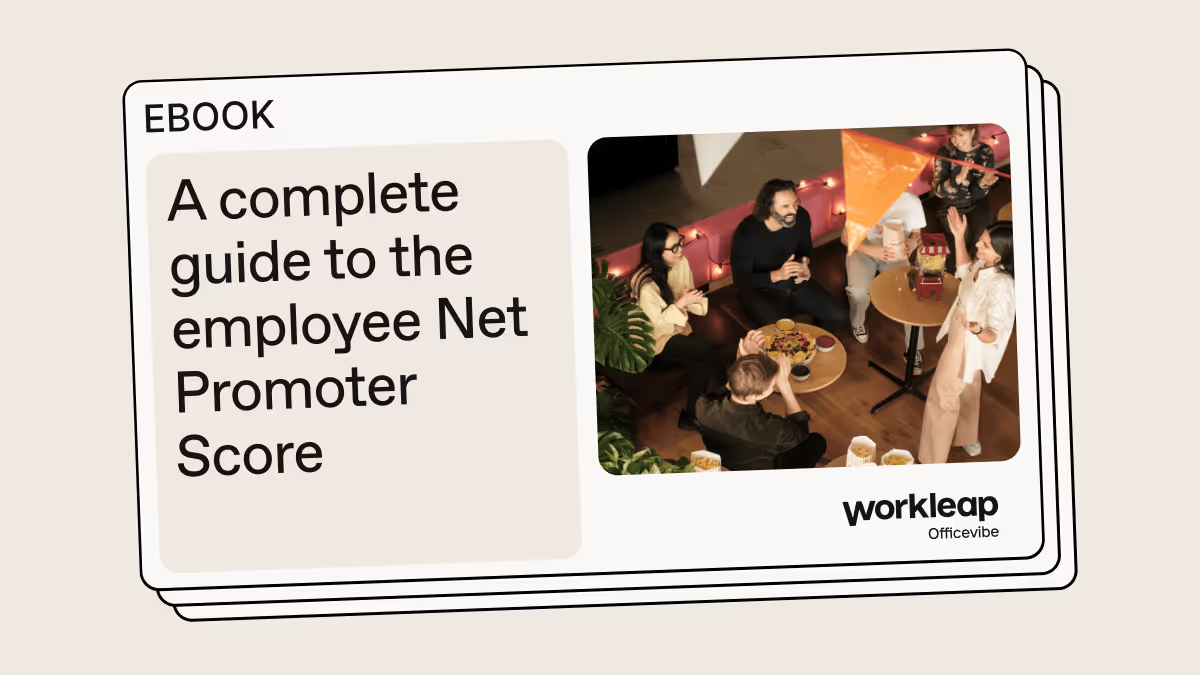Understanding employee retention vs. turnover

Discover Workleap Officevibe's benchmark report on 12 key employee engagement metrics

If you’re focused on retaining your workforce, it’s important to watch for early warning signs.
Employees who don’t feel valued or motivated may start looking elsewhere, and if several leave at once, your team could quickly become understaffed.
Luckily, you can avoid surprises by measuring employee retention and turnover. Tracking these metrics helps you spot shifts early and make timely improvements.
In this guide, we explain the difference between employee retention vs. turnover, how to calculate both, and practical ways to keep top talent.
What are employee retention and employee turnover?
Employee retention, or talent retention, is an organization’s ability to keep hold of, or “retain,” its workforce. Turnover describes the rate of employees leaving a company and new hires replacing them. Strong retention usually corresponds to lower turnover, and vice versa.
What is an employee retention rate?
A retention rate is the percentage of employees who stay with a company over a defined timeframe. A low retention rate means that many team members have left the organization over the measurement period, which serves as an early warning sign of cultural problems.
How to calculate employee retention rate
To work out your retention rate, start by defining a measurement period. Annually or quarterly are common timeframes. Then, divide the number of employees at the end of the period by the number at the start. Multiply by 100 to get a percentage.
Retention rate = (# employees who **stayed the entire period**) ÷ (# employees **at start** of period) × 100.
Use a cohort approach: exclude new hires and only count employees who were on staff at the start of the period.
Example
Suppose your company has 120 employees at the beginning of the year and 112 at the end. Divide 112/120 to get 0.93. Now, multiply by 100. This gives an annual retention rate of 93%.
What is a turnover rate?
A turnover rate is the percentage of employees who cycle out of a company in a given period.
All companies experience some turnover, as workers move on due to life changes or exciting opportunities elsewhere. What’s considered a good turnover rate depends on your industry, but 13% is fairly standard.
Employee turnover has two subcategories: voluntary vs. involuntary turnover. Voluntary turnover refers to when an employee chooses to leave the company by quitting or retiring. Involuntary turnover occurs when the employer ends the relationship, whether through firings or layoffs.
How to calculate employee turnover rate
To establish your employee turnover rate, set a measurement period, like a year or a quarter. Divide the number of employees who left during that period by the average total number throughout it. Then, multiply by 100 to get your turnover rate.
Retention rate = (# employees who **stayed the entire period**) ÷ (# employees **at start** of period) × 100.
Example
Say your organization maintained 120 employees over the first quarter, but there were 10 voluntary or involuntary exits. Divide 10 by 120 to get 0.083 and multiply by 100 to get a percentage. This would mean your organization has a turnover rate of 8.3%.
Why measuring employee retention and turnover matters
Turnover is costly: recruiting, interviewing, onboarding, and ramp time all add up.. The current workforce, on the other hand, already understands the company’s mission and how to perform their tasks. They’re able to work autonomously, saving managers and HR time and money spent training new hires.
Retention and turnover tracking acts as an early warning system, helping you spot when engagement or productivity might be low. By uncovering the root cause and addressing it, you could avoid a serious hit to efficiency.
Common reasons why employees leave their jobs
So turnover is rising and retention is dropping, and you want to know why. Here are a few common reasons employees might be jumping ship:
- Ineffective leadership: When managers are ineffective, so are their teams. Leaders need to organize workflows, set the cultural tone, train employees, and ensure top performance. If they can’t, their reports suffer. Common issues include poor management communication leading to confusion or impossible goals and deadlines that leave workers burnt out.
- Limited growth opportunities: Many employees want careers that move forward. When opportunities for advancement are limited, frustrated employees might look for growth avenues elsewhere. Combat this by establishing defined career growth plans and offering training or professional development opportunities.
- Inadequate compensation: Low pay compared to roles at competitor companies can lead to employees feeling undervalued. An employee with poor compensation may be quick to leave when a better-paying opportunity comes along.
- Lack of recognition: When achievements aren’t recognized, employees can feel like management doesn’t care about the work they put in. It can also lead to confusion, since workers don’t know what success looks like or how to improve. For many, this is more than enough reason to seek out other work.
- Poor company culture: Toxic norms—conflict, micromanagement, or impossible standards—drive people out. When an employee feels uncomfortable at work, they won’t stick around for long.
- Burnout or lack of work-life balance: Chronic overworking leads to low mood and poor performance, and can even have physical and mental health repercussions in the form of burnout. A poor work-life balance can add these stresses. Instead of staying somewhere that doesn’t put people first, many employees will opt to protect their wellness by finding a new role.
5 retention strategies that reduce turnover
Avoid the common organizational pitfalls that push employees to leave. Use these five retention strategies to make your company a great place to stay.
Gather feedback
Regularly survey your workforce and have leaders meet one-on-one with employees for feedback sessions. Gathering insights about the employee experience helps you spot issues and proactively address them.
Tools like Workleap Officevibe’s anonymous pulse surveys and confidential messaging are a great way to hear employees’ unfiltered feedback. It’s better to learn that your company culture is toxic than to quietly and steadily lose employees.
Improve workplace communication
Teach leaders how to delegate and communicate professionally with their direct reports to build respectful mutual connections. Ensure priorities are communicated clearly, even if the process is time-consuming, so there’s no confusion over tasks. When people know what’s expected of them, it helps avoid frustration.
Provide competitive compensation and benefits
Trying to save on compensation will cost you later. Invest in your workforce with competitive salaries and benefits packages. Keeping the talent you already have is far more cost-effective. Plus, appealing pay and benefits packages help you attract the best talent when you do start hiring.
Recognize and reward employees consistently
Have leadership consistently check in with employees in two-way feedback loops. Managers can provide morale-boosting praise and constructive criticism, and employees can offer insights into anything impacting their experience. With employee surveys, messaging, and in-the-moment recognitions, Workleap Officevibe is a great way for leaders to stay in touch with teams.
Support work-life balance and well-being
Take a vested interest in your employees' wellness. Survey workers on how pleased they are with the company culture, benefits, pay, and their workflow. Then, use this data to improve the employee experience. Even small changes, like allowing employees to work remotely a few days a week, can have a huge impact.
Track retention and turnover metrics to build a stronger workplace
To build a workplace where people want to stay, you need to know why they want to leave. Track retention and turnover metrics to spot the first signs of flight.
Get to the bottom of what’s working and not at your organization with direct employee feedback. Workleap Officevibe allows management to survey employees and confidentially address their concerns. Plus, you gain access to a platform where leaders have constant contact with their direct reports. With Workleap, you’ll never miss an opportunity to improve.
Give HR and managers the clarity, confidence, and connection to lead better every day.


%20(1).avif)


.avif)
.avif)







.avif)